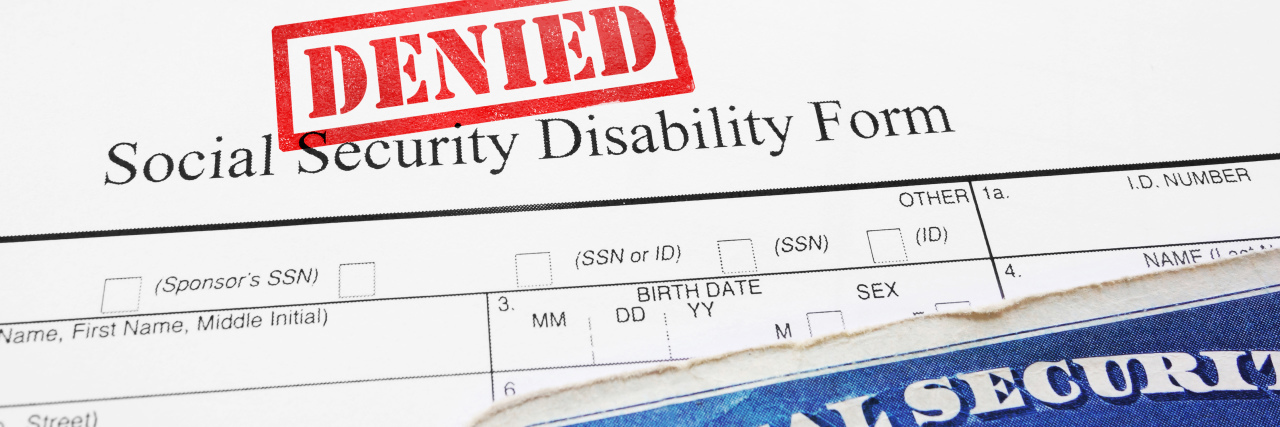Regarding a Trump administration proposal to strip away disabled people’s benefits, Alex Lawson, executive director of Social Security Works, opined, “Donald Trump and his advisers know that this will kill people, and they do not care.”
While I would normally dismiss such a claim as hyperbole, the idea that the U.S. President and his staff would react with disregard if disabled people died is not outside of the realm of possibility. After all, the current administration’s efforts to deport sick migrants and to refuse cost-free flu shots for those in Department of Homeland Security custody have led to deleterious consequences — for disabled people, for those with compromised immune systems, and for public health in general. By extension, it is hardly a stretch to believe such inhumane policies would eventually be extended to disabled citizens.
The specific proposal in question, as reported by the Philadelphia Inquirer, Yahoo! News, and further expounded upon by Jake Johnson of Common Dreams, concerns the classification and frequency of eligibility reviews for recipients of Social Security Disability Insurance.
As it stands right now, the U.S. government places SSDI beneficiaries into three categories based upon the severity of their condition and their prognosis. They are “Medical Improvement Expected,” “Medical Improvement Possible,” and “Medical Improvement Not Expected.” The predicted likelihood for improvement then determines the frequency of disability reviews.
If the proposal is adopted, the Trump administration would add a new classification, “Medical Improvement Likely,” and may include as many as 4.4 million beneficiaries, among whom would be the government’s internal Step 5 category.
According to Johnson, who cites the Inquirer, Step 5 recipients comprise people who “are typically 50 to 65 years of age, in poor health, without much education or many job skills [and] often [have conditions] such as debilitating back pain, depression, a herniated disc or schizophrenia.”
That Step 5 individuals would be included in the “Medical Improvement Likely” category is baffling, as people’s conditions generally deteriorate as they age, explains Jennifer Burdick to the Inquirer. Burdick is supervising attorney with Philadelphia-based Community Legal Services. Labeling these people thus is “a radical departure from past practice,” she pronounced. “There’s no medical or scientific basis to say they’ll get better.”
Jonathan Stein, who is working with Burdick, views the goal as purely ideological — make the frequency of reviews such that these individuals cannot conceivably comply with completing what Yahoo! News describes as “large volumes of paperwork.” The end result is that vulnerable populations would be jettisoned from SSDI altogether. After all, they would be subjected to a “complicated and burdensome process for people living with a disability.”
While Yahoo! News cites cost containment as the motivation for the Trump administration’s policy revision, disability advocates have questioned both the size of the savings and the morality of the proposal’s implementation. Considering that older workers already face the spectre of employment discrimination even if they are abled, throwing Step 5 recipients off of SSDI is a horrifying and even fatal prospect.
Concerning the changes, Pennsylvania Democratic Senator Bob Casey remarked, “I have serious concerns about the proposed rule.” He continued, “It appears to be yet another attempt by the Trump administration to make it more difficult for people with disabilities to receive benefits.”
One of the Keystone State’s U.S. Congressmen, Rep. Brendan Boyle, weighed in about the proposal; “These changes seem arbitrary, concocted with no evidence or data to justify such consequential modifications.” Boyle elaborated, “This seems like the next iteration of the Trump administration’s continued efforts to gut Social Security benefits.”
Even if they are surviving on SSDI benefits alone, disabled people can expect to eke out a living at or below the federal poverty level. That the Trump administration is considering punishing those who are already struggling financially evinces an inconceivable heartlessness.
The first step toward a more equitable future for disabled people is to fight back; public comment on the proposal has been extended until January 31. It’s about time that SSDI recipients and our allies made our voices heard. Here’s how you can comment.
The Trump administration may not care if we live or die, but the American public ought to value disabled lives. After all, everyone has a contribution to make to society.
Getty image by ZimmyTWS.

